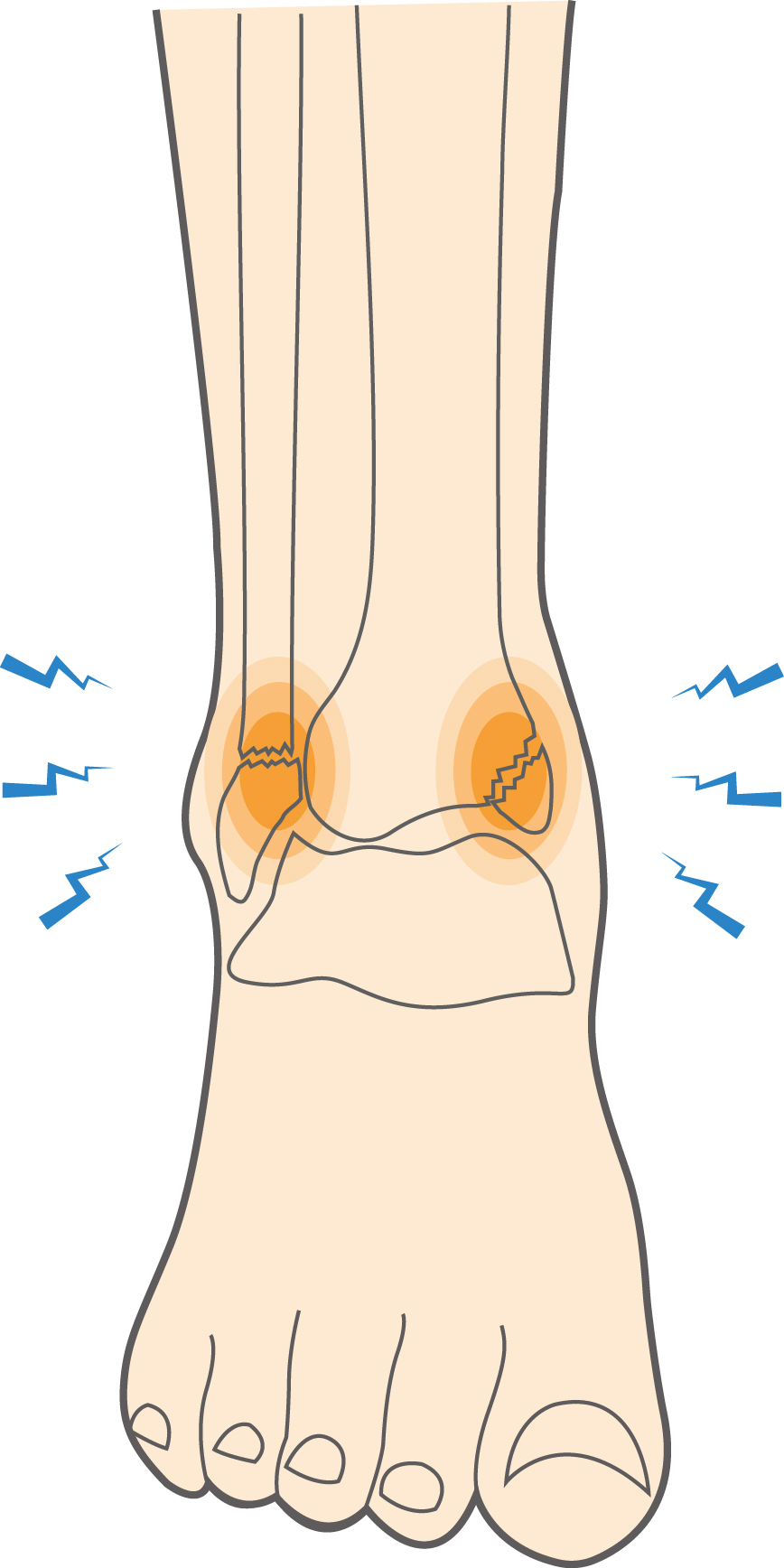A broken ankle or ankle fracture means that one or more of the bones in your ankle are broken
Your ankle is made up of three bones, the tibia or shin bone located on the inside of your ankle which bears 90% of your body weight, the fibula a long thin bone on the outside of your leg and the talus a small bone that sits above the heel bone. Many times when one bone is broken the other bone may be injured as well.
Any of these bones can be broken. Broken ankles or fibula and tibia fractures are categorized as unstable and stable. Stable fractures have enough support from bones and ligaments, the tough fibrous tissue that connects bones, so there is slight motion at the fracture site. Unstable fractures are more severe and usually involve torn ligaments.


